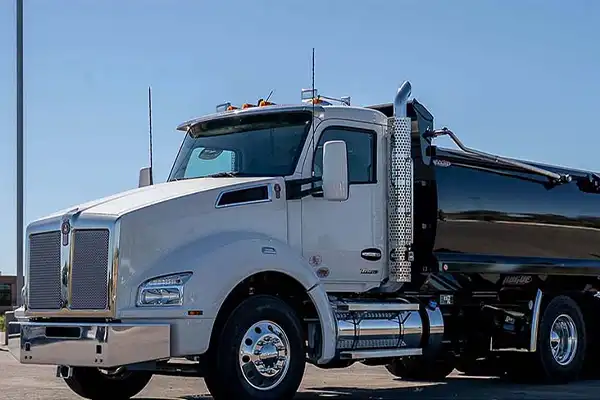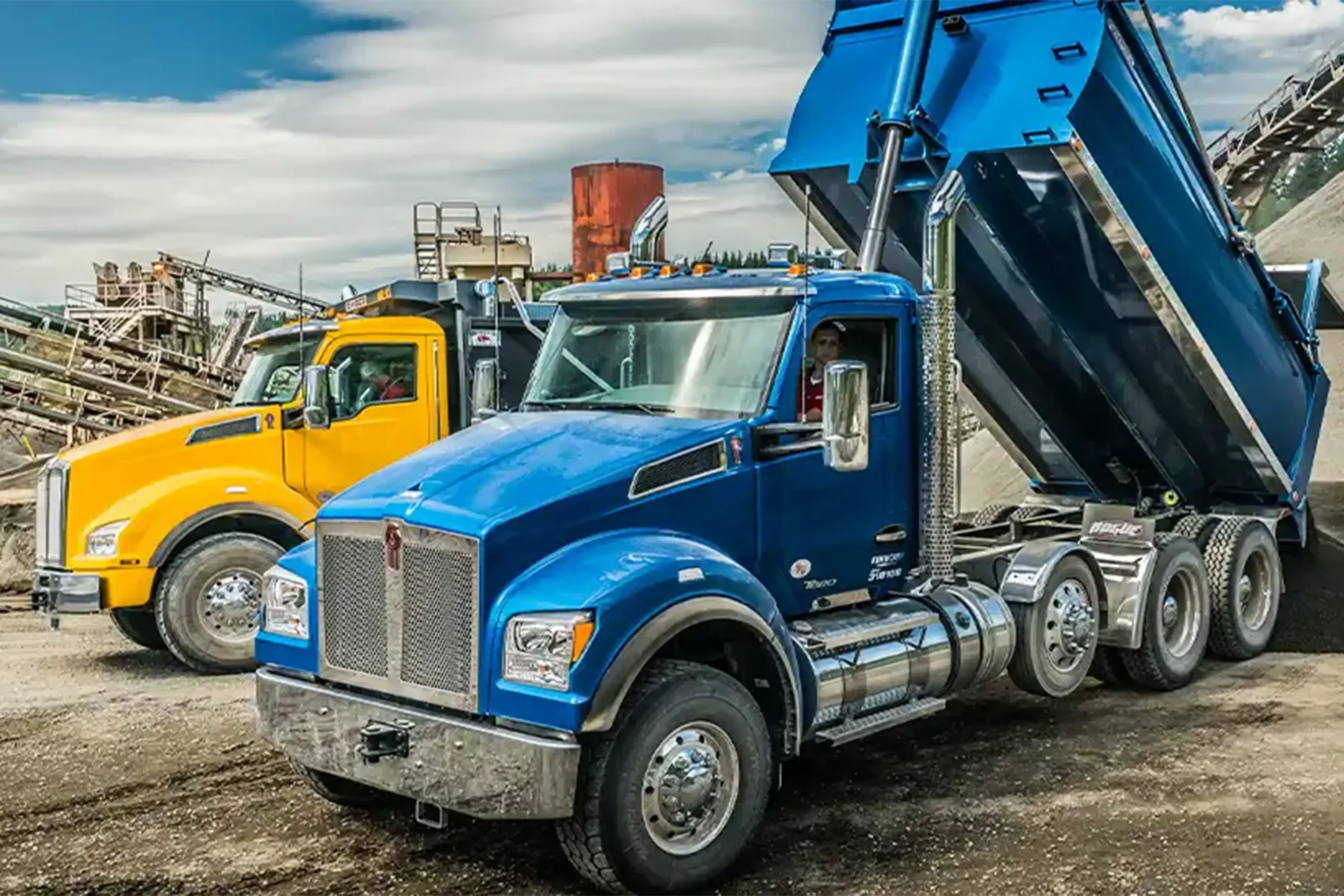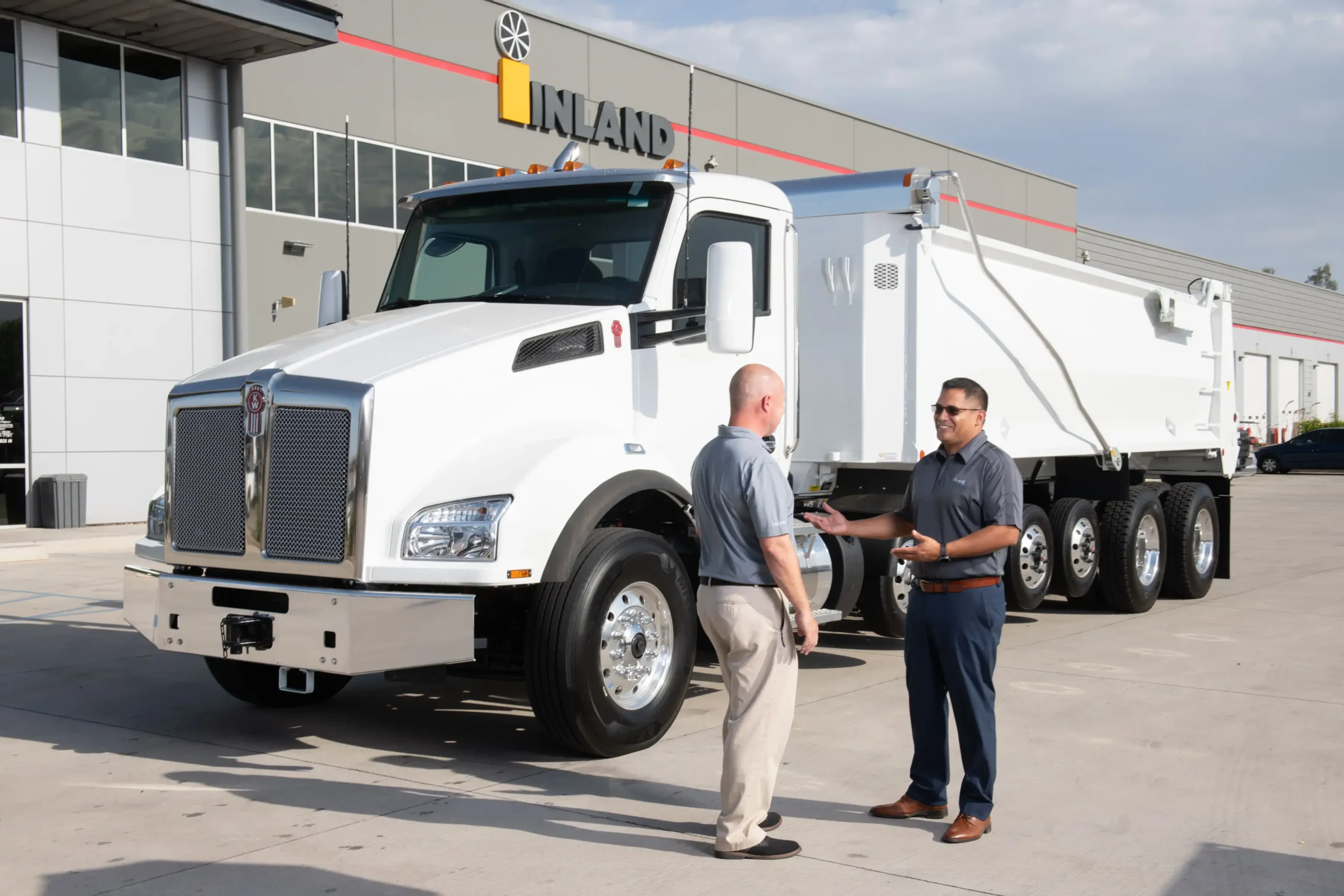
Taking the leap to finance your first commercial truck is a major step toward building your business. While it’s an exciting milestone, the financing process itself can feel complex and overwhelming. You need to understand the full costs, compare different lenders, and prepare the right documents.
In this step-by-step guide, we simplify the entire process for you. Our goal is to give you the clear information you need to confidently secure the right funding and get your truck on the road.
1. Determine the Total Cost of the Truck
When conducting research for your first commercial truck, it’s natural to focus on the sticker price. However, the long-term success of your business depends on understanding the total cost of ownership.
The purchase price is a significant one-time expense. However, the daily, monthly, and yearly costs of running that truck on the road are what truly impact your profits. Below are the most common expenses to consider when purchasing your first commercial truck.
Down Payment
Lenders often ask for a down payment. This helps reduce their risk and shows that you are invested in the purchase of your commercial truck. This amount typically ranges from 10% to 30% of the truck’s price.
For example, on a $150,000 truck, you could need between $15,000 and $45,000 upfront. Your credit score, business history, and the age of the truck can all influence your down payment.
Maintenance and Repairs
This is a critical budget item that goes beyond routine oil changes. You should plan for regular expenses like new tires, brake replacements, and fluid checks. It is important to have an emergency fund for big, unexpected repairs. Engine or transmission repairs can cost thousands of dollars.
Fuel Costs
As one of your largest and most frequent expenses, fuel costs will directly impact your profit. The amount you spend will depend on the price of diesel, how far you travel, your truck’s fuel efficiency, and your driving habits.
Insurance and Permits
To legally drive your truck, you need different types of commercial truck insurance. This includes primary liability insurance, cargo insurance to protect your goods, and physical damage coverage. You will also need to pay for different permits. These costs can change based on the state you work in and the type of freight you carry.
Registration and Licensing
This includes the annual fees for registering your commercial vehicle with your state government. You will also need to pay for the correct license plates, which are more expensive for commercial trucks than for personal vehicles.
2. Explore Commercial Truck Financing Options
When it comes to paying for your truck, you have several options. The best one for you will depend on factors like your credit history and business goals. Let’s look at the most common financing sources so you can make an informed decision.
Traditional Bank Loans
This is a common route for business owners with a strong financial history. Because banks serve a wide range of industries, they rely heavily on your credit score and a comprehensive business plan to approve your loan. The approval process can be slower as it goes through multiple layers of review. In return for meeting their strict requirements, you can often secure some of the most competitive interest rates available.
Credit Unions
As member-owned financial institutions, credit unions often prioritize their relationship with you. This can lead to more flexible lending criteria than you might find at a large bank. If you are a current member in good standing, they may consider your whole financial situation, not just your credit score. This can be a good option for small business owners looking for a more personal lending experience when seeking a commercial truck loan.
Specialized Truck Financing Companies
These lenders work exclusively with the trucking industry. They see the truck as a valuable asset.
They also know the real challenges of being an owner-operator. This expertise often leads to faster approvals and more flexible credit requirements. They may be more open to working with new businesses or those with less-than-perfect credit. However, higher interest rates may occur because of this convenience.
Dealership Financing
In-house semi-truck financing is often the most convenient option because it allows you to secure your truck and your financing in the same place. Dealerships, like Inland Kenworth, have good connections with lenders. They may even have their own financing division.
This makes the application and approval process easier. This one-stop-shop approach saves you time and reduces paperwork. It is the easiest way to add a trade-in to your purchase.
Leasing
Leasing a commercial truck is an alternative to buying that functions more like a long-term rental. Instead of a large down payment, you typically provide a security deposit and the first month’s payment, which frees up your cash.
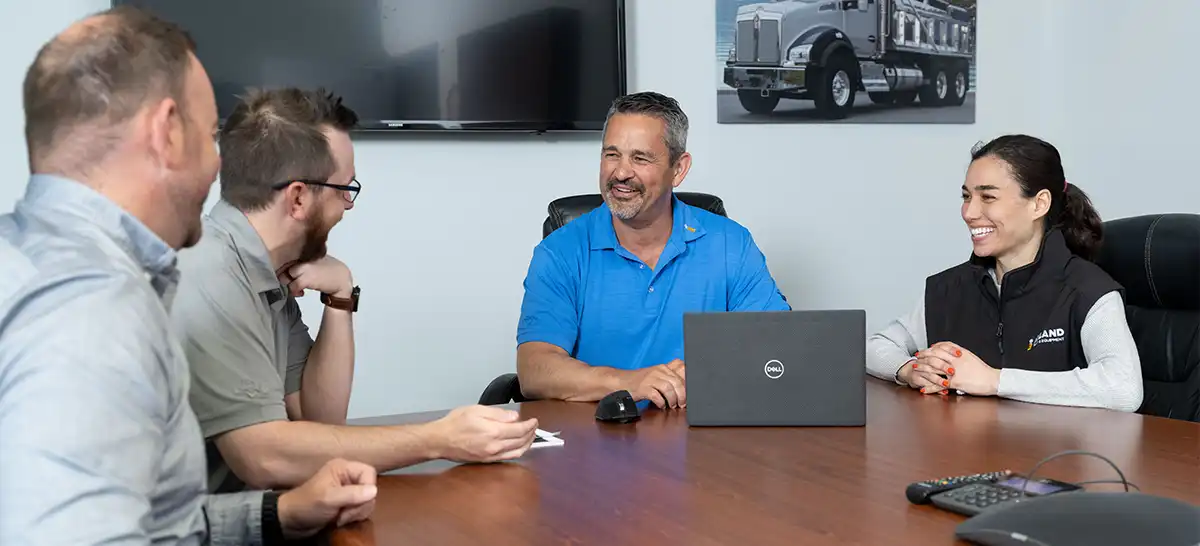
3. Prepare Your Application
It’s crucial to understand that lenders aren’t just financing a truck; they are investing in your business. A solid business plan is your opportunity to prove that your venture is viable and that you have a clear strategy for generating revenue. It demonstrates that you’ve thought beyond the purchase and have a roadmap for success.
Lenders need to see detailed financial projections, including your anticipated income, fixed and variable costs, and your target clients or routes. This plan not only strengthens your application but also serves as your own guide, helping you stay on track and profitable from day one.
Getting your documents ready before applying for a commercial truck will show lenders you are serious. Below are some recommendations that can help your application go through the process more easily.
- Financial Documents:
- Personal and business tax returns (at least two years).
- Bank statements.
- Profit and loss statements.
- Business Plan:
- Show your projected income and expenses.
- Detail your routes, clients, and the type of freight you’ll haul.
- Explain how the truck will help your business generate revenue.
- Personal Information:
- Your commercial driver’s license.
- Business registration or incorporation documents.
4. Know Your Credit Score
Lenders heavily consider your credit score. A good credit (or higher credit) score can help you secure better interest rates and loan terms. If your score falls on the lower side, lenders might ask you for a larger down payment. It’s a good practice to check your credit score, review any mistakes, and pay down debt before you apply for financing.
5. Compare Lenders and Loan Terms
Don’t jump at the first offer you receive. Take the time to compare interest rates, the length of the loan, and any associated fees from various lenders. Pay close attention to:
- Interest Rates: A fixed rate will not change, but a variable rate can fluctuate over time.
- Loan Term: This is how long you have to pay back the loan, which is typically between 48 and 72 months.
- Prepayment Penalties: Some lenders will charge you a fee if you decide to pay off your loan ahead of schedule.
You can find online truck loan calculators to help you estimate what your monthly payments will be with different rates and terms.
6. THe Approval and Funding Process
After you submit your application, the lender will review it. You could receive approval in just a few hours. If you receive pre-approval, you will then discuss the specific loan terms. Once you agree to the terms, the loaner can fund the loan, sometimes in as little as 24 to 48 hours.
Financing a Used Semi-Truck
For first-time owner-operators, financing a used truck is a common choice. The loan amounts are usually smaller, and the repayment terms can be shorter. This can be a smart way to start your business with less debt.
Securing Semi-Truck Financing with No Down Payment
The idea of acquiring a commercial truck without a significant upfront payment is appealing, especially for new owner-operators managing their startup capital. While securing zero down semi-truck financing is challenging, it’s next to impossible. This option is typically reserved for applicants who present the lowest risk to lenders.
To qualify, you will likely need to demonstrate a strong financial history, including a high personal credit score (often 700 or above), and a solid business plan. Lenders will also want to see proven experience in the trucking industry—usually at least two to five years of verifiable driving history. This track record provides confidence that you have the skills and industry knowledge to run a profitable operation from the start.
Your Road to Ownership: Key Takeaways
Financing your first commercial truck is one of the most significant steps you’ll take in your career, and with the right preparation, it’s a goal well within your reach. Remember to look beyond the sticker price and budget for the total cost of ownership, from fuel and maintenance to insurance and permits. Take the time to explore all your financing options, strengthen your application with a solid business plan, and compare every offer you receive.
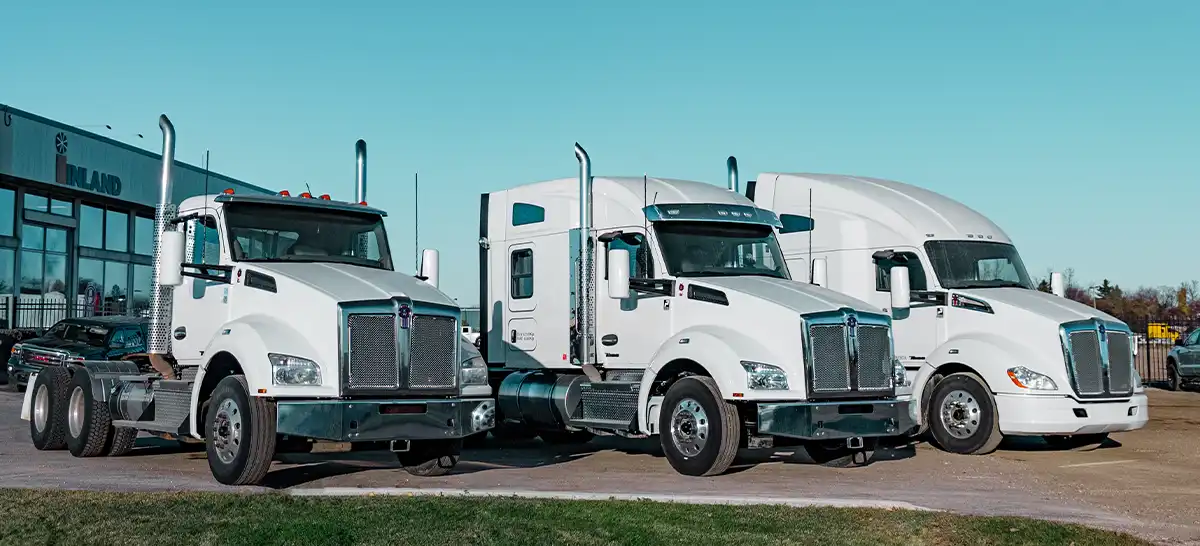
Explore Financing Services at Inland Kenworth
Securing the right financing for your commercial truck shouldn’t be a roadblock. Inland Financial Services offers easy and affordable lease and finance options for buying commercial trucks. We are proud to be the exclusive dealership for Kenworth trucks across Southern California, New Mexico, and Arizona.
For over 70 years, we have built a reputation for excellent customer service. Our strong partnerships with Paccar Financial and other lenders have helped many companies buy the trucks they need. Don’t let a complex financing process slow you down. Reach out to our Financing team today to find a solution that works for you.


